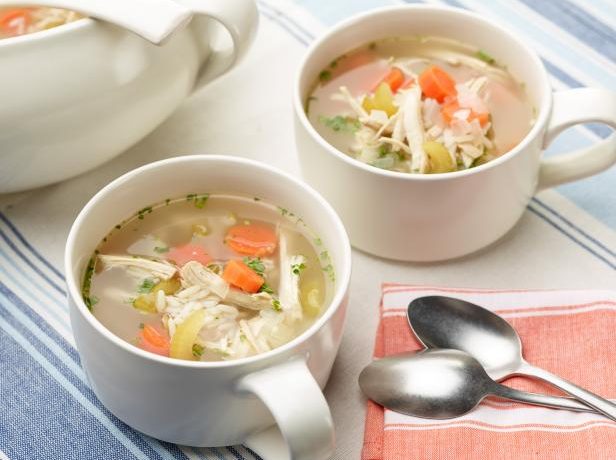The base for a host of easy, cheap healthy meals lies in preparing a good meat or fish stock or broth. Rather than get into the somewhat irrelevant controversy over what the difference is between a stock and broth I will just call this my chicken broth recipe.
Before we jump into the mechanics let’s discuss the health benefits of making your own chicken broth from scratch, not to mention the much superior tantalizing flavors. To begin with, you really want to start with a bird that has been raised humanely with space, fresh air and sunshine and access to natural forage.
That way you will be assured of obtaining all of the important nutrients in the gravies, soups, sauces and other dishes you use the broth as a base for. If you prepare the broth properly it will be chock full of minerals drawn from bone, marrow, cartilage and the veggies.
These minerals are very easy for our bodies to assimilate as they are in the form of electrolytes. One of the biggest boons in a properly prepared broth, which is largely absent in commercial products, is the gelatin pulled out of the bones during the long simmering.
This gelatin is hydrophilic, which means it has the rare property of attracting liquids. This greatly enhances digestion by drawing digestive juices to the food. This is why traditionally prepared gravies and sauces were added to meals as well as why, in many cultures, soup was served before the main course.
Gelatin from a bone broth also spares protein. This is an important aspect of preparing inexpensive nutritious meals because you can do with a smaller portion of meat. It provides a means of getting all of the necessary nutrients and attaining the same level of satiation while spending less money.
For whatever reason, chickens raised commercially in overcrowded conditions, never seeing the light of day while being fed cheaply with primarily genetically modified grains and filled with antibiotics often do not produce gelatinous broth.
I enjoy eating chicken prepared in a variety of ways including roasted, in soups, in pot pies or in a wrap to name a few. Hence, I have adopted two basic ways of making broth, which allow me to make the most of the birds I purchase.
The first way I make it is with a whole bird. Then after simmering for about 24 hours I carefully collect all of the meat and put it aside for soups and pot pies and stuff. This way I have gravy ready for when I roast a bird.
As much of the flavor and many of the nutrients have been drawn out of the meat I preserve, I make the subsequent dishes with the stock. This not only returns the flavor and nutrients but add more drawn from the bones, marrow and gristle, which would otherwise be waste.
The second way I make a broth is to freeze the carcasses of roasted birds till I have 3 or 4 then make broth with them. In either case I cut up the gizzards and add them also. Organ meat is a great source of vitamin A and its widespread use in traditional cuisines throughout the world attest to its health benefits. Being somewhat frugal I usually save the unusable greens from leeks, carrot ends and trimmings from celery stalks.
So, when I make a broth I just grab whatever I have in the freezer for vegetable trimmings. For those of you who are not quite so frugal you can add a couple of onions, a couple of carrots and a few stalks of celery all coarsely chopped.
I cut up my whole chicken and put it or the carcasses in a large stock pot with a couple of gallons of water along with the veggies and chopped gizzards and a ¼ cup of vinegar. Cooking it with vinegar, which is acidic, helps draw out the minerals especially calcium, potassium and magnesium.
I let it stand for about an hour to give the vinegar time to work then bring it to a boil. I then carefully skim off all of the scum which surfaces as this will otherwise ruin the broth. Then I simmer it for about 24 hours.
Probably about 6 hours will suffice to make a nice stock, but the longer time draws out more nutrients and flavor. About 10 minutes before I turn it off I add a couple of sprigs of fresh parsley. I then let it cool and if I used a whole chicken I collect and preserve the meat for the above noted uses.
After straining the liquid I place it in the fridge in a large bowl till the fat congeals so I can skim it off. If the broth does not gel you can reduce it by simmering it till it does. If it is one mass of gel you can make it go further by thinning it with water.
I freeze mine in yogurt containers or cheap ones from the dollar store in convenient sizes for subsequent recipes. Having homemade broth on hand greatly facilitates me in preparing cheap healthy meals.






